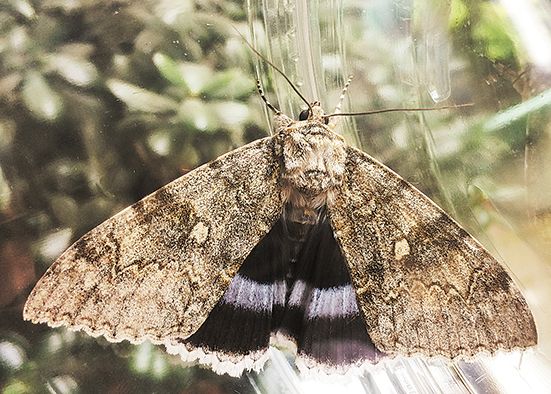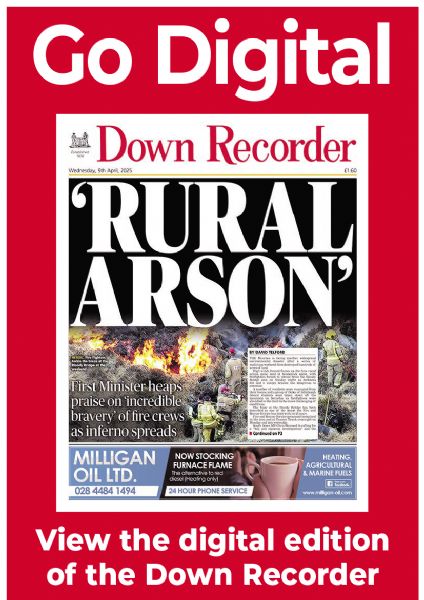Butterfly not seen since 1890s spotted in Killough
Butterfly not seen since 1890s spotted in Killough
21 September 2022

A RARE butterfly, not thought to have been seen in Northern Ireland for more than 200 years, has been spotted in Killough.
A clifden nonpareil, otherwise known as a blue underwing, was spotted at a cottage near Killough by local woman Doris Noe, wife of freelance ecologist Chris Murphy.
The couple had been out looking for another rare specimen, though of a different species — a black tern bird.
Chris said he could barely believe his eyes when Doris drew his attention to the interesting winged creature flashing a light shade of blue, from a perch on a gable wall.
On close inspection, Chris, a former assistant regional officer with the RSPB in Northern Ireland, saw the butterfly’s trademark powder blue underwings – which gives it its common name – and confirmed with a search online.
“I realised that it’s a first, not only for County Down in a very long time, but probably the first time one has been recorded in Ireland since the 1800s.
“One was recorded in Londonderry in 1891 and another in Dun Laoghaire in 1896,” he said.
Carefully capturing it in a butterfly-friendly container, Chris summoned local lepidopterist Andrew Crory, of Ulster Wildlife, to lend his expertise to the discovery.
Andrew confirmed the Murphys’ suspicions that their tiny captive was indeed a clifden nonpareil, before they released it safely back into the wild.
The butterfly – which Andrew clarified was strictly a moth – has caused him great excitement.
And not only did he reveal that along with the Murphys’ single clifden nonpareil, there was a second one close by, which they did not capture.
And in an even more thrilling development, Andrew revealed that the following day, a third one was reported in the Coleraine area.
“If there are two reported in County Down and one in north Antrim, there must be hundreds of them that we just don’t see.”
And the reason? “Climate change”, he said assuredly.
Andrew said this type of moth was a European one that has been drawn more northerly than their usual habitat by the warming of the climate.
He guessed there could even be colony of these rare visitors to Ireland in somewhere like the south east of England which enjoys warmer weather than our more westerly landmass.
“That’s climate change for you,” he stressed. “Things are always in a state of flux and climate change exacerbates these things.”
Andrew is full of admiration of the moths. “Nonpariel in French means ‘without compare’ and with its blue colour it quite a striking thing because blue is a rare colour in nature.
“When it flaps its wings it is very impressive and they are a big, powerful flying moths which instinctively migrate northwards, such is the instinct to more into new territory.”
He said the discovery was an important one which butterfly conservationists will be keen to replicate at other parts of the country.


